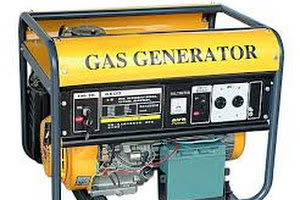Environmentalist
Weighs deserves, Perils of latest nuclear energy Plants
A compelling graph usually shown to school students in introductory courses on statistics shows
energy consumption versus GDP growth. the link is deeply related across all continents and epochs. there's a matched relationship between the economic success of a nation and therefore the quantity of energy it consumes.
 |
| Nuclear energy Plants |
This stark truth is value basic cognitive process after we discuss heating and therefore the ought to scale back carbon emissions. The counter poison to economic condition is economic process, and economic process is completely related with energy consumption. thus if we tend to square measure to attain a discount of carbon emissions while not dooming
millions within the developing world to continuing, ghastly economic condition, we tend to should notice different sources of energy for those we tend to propose to
junk as a result of they coolly the atmosphere.
That is the core thesis of a replacement Kindle Single
eBook by the science author Mark Lines known as Nuclear a pair of.0: Why A inexperienced Future desires nuclear energy. Lines kicks off his discussion by suggesting that
everything you thought you knew regarding nuclear energy is maybe wrong. this is often even as well, as a result of he can then attempt to demonstrate to you that atomic energy is important to avoid harmful heating. exploitation the newest compilation of world energy statistics, Lines shows
that with wind and star still at solely regarding one per cent of worldwide primary
energy, asking renewable to deliver all the world's power is "dangerously psychoneurotic."
 |
| Nuclear energy Plants |
Moreover, harking back thereto ironclad
correlation between economic process and energy growth, there’s no risk of exploitation less energy whereas the
developing world is painfully extricating itself from economic
condition. Developing world economic process needs adding the equivalent of a replacement Brazil to international electricity consumption every year. to take care of this pace with carbon-based fuels, you'd ought to open a replacement coal-fired 100-megawatt power station each twenty seven days.
The anti-nuclear movement of the Seventies and '80s
succeeded solely in creating the planet a lot of passionate about fossil fuels.
Now, at the dawn of the second decade of the new millennium, we've got an opportunity to plot a replacement course, Lines argues, and that we should avoid that course that is "not
lit by sunshine, however shrouded in coal smoke". people who need to ascertain a low-carbon future ought to
cooperate, he insists, last his short eBook with associate degree bold proposal for associate degree
Manhattan Project reasonably investment in wind, solar, and nuclear energy.
Though he might have taken longer and a lot of pages to form his case, Mark Lines makes a compelling argument for a big enlargement of nuclear energy stations as being the sole realistic means of keeping carbon emissions under control. He marshals the
facts to form his case. Most observers of nuclear power most likely assume it's unlikely that a replacement agreement in favor of giant will increase in nuclear energy station construction is even doable. which will still be the case. One short eBook won't amendment the controversy. nonetheless absent some unforeseen and exogenous technological
miracle, this could be the most effective probability we've got. So most important Environmentalist Weighs deserves, Perils of latest nuclear energy Plants


















